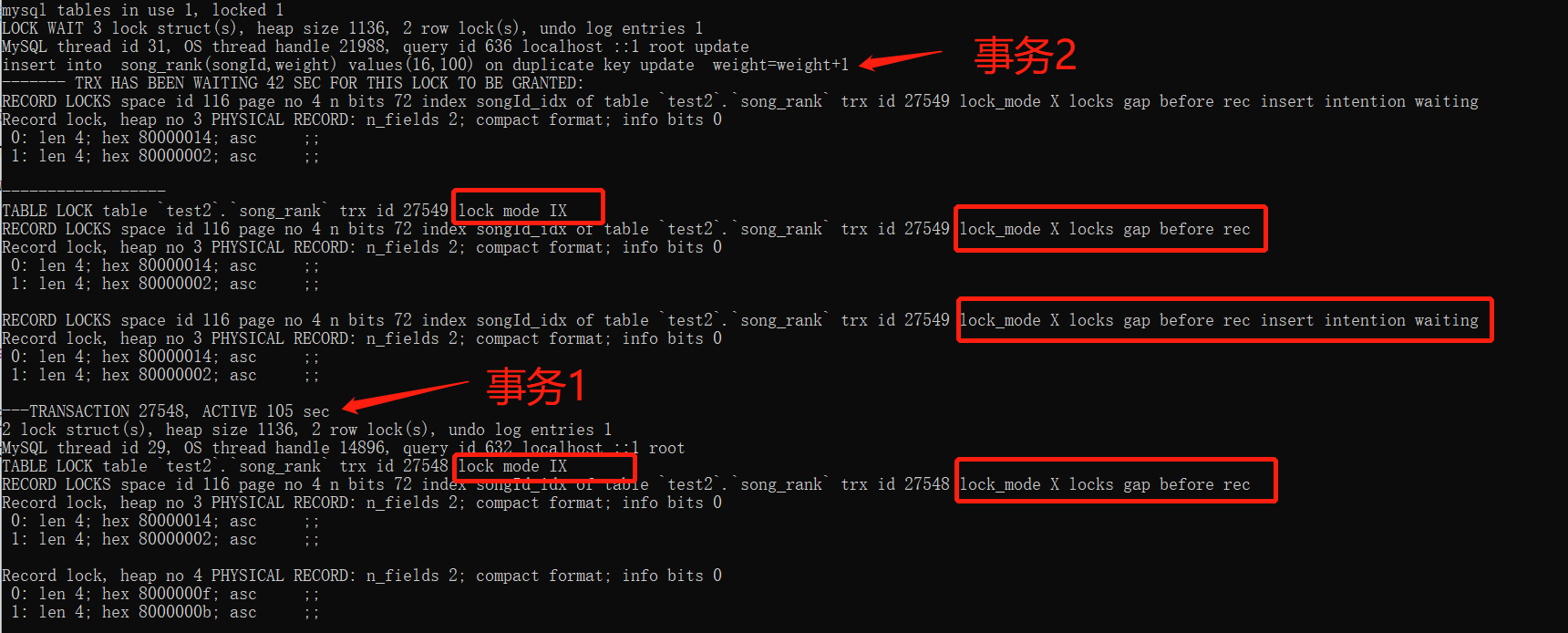

Mysql deadlock found how to#
How to grant all privileges to root user in MySQL 8.0.Connection Java-MySql : Public Key Retrieval is not allowed.How to resolve Unable to load authentication plugin 'caching_sha2_password' issue.Authentication plugin 'caching_sha2_password' is not supported.phpMyAdmin - Error > Incorrect format parameter?.PHP with MySQL 8.0+ error: The server requested authentication method unknown to the client.How to post query parameters with Axios?.This doesn't seem right for inserts though, the delete and insert are using datetime ranges that don't overlap so maybe something else is going on. Normally the insert will wait patiently for that key lock to open up but this will deadlock if the delete tries to lock the same page the insert is using because the delete needs that page lock and the insert needs that key lock. The insert is going to acquire a lock on the page it is inserting into, and then attempt to acquire the key lock. The delete is going to hold a key-range lock for datetime, to prevent rows matching its where clause from being added in the middle of the transaction, and as it finds rows to delete it will attempt to acquire a lock on each page it is modifying. Theory about the deadlocks: I don't have a lot of background in MySQL but here goes. This avoids the dependency on the cron job and allows you to reschedule it to run less often. Select userid from onlineusers where datetime <= now - interval 900 second ĭelete from onlineusers where userid in (select userid from deletetemp) īreaking it up like this is less efficient but it avoids the need to hold a key-range lock during the delete.Īlso, modify your select queries to add a where clause excluding rows older than 900 seconds. You might try having that delete job operate by first inserting the key of each row to be deleted into a temp table like this pseudocode create temporary table deletetemp (userid int) If table lock happen, the lock contention is higher and the likelihood of deadlock increases. Be sure then to always have index on the foreign keys (and of course primary keys), otherwise it could result in a table lock instead of a row lock. It might result in other lock being acquired than the row that is modified. To do so, the database needs to check the foreign keys in the related tables. When a row is inserted/update/delete, the database needs to check the relational constraints, that is, make sure the relations are consistent. always table A first, then table B).Īnother reason for deadlock in database can be missing indexes. Generally speaking, try to acquire lock always in the same order even in different transaction (e.g.
Mysql deadlock found update#
To avoid deadlock, you must then make sure that concurrent transactions don't update row in an order that could result in a deadlock. Each time you insert/update/or delete a row, a lock is acquired.

There are numerous questions and answers about deadlocks. (Say, 3 retries on this particular error before giving up).ĭeadlock happen when two transactions wait on each other to acquire a lock. you can add this logic to your client code. WHERE datetime <= now() - INTERVAL 900 SECONDĪnother thing to keep in mind is that mysql documentation suggest that in case of a deadlock the client should retry automatically. if you do (and I suspect you do), order their WHERE in (k1,k2.kn) in ascending order.įix your delete statement to work in ascending order: Make sure you have no other queries that lock access more than one key at a time except for the delete statement. connection 2: locks key( 1), locks key( 2).Now, if you changed your queries such that the connections would lock the keys at the same order, ie: If both run at the same time, connection 1 will lock key(1), connection 2 will lock key(2) and each connection will wait for the other to release the key -> deadlock. connection 2: locks key(2), locks key(1).connection 1: locks key(1), locks key(2).You get a deadlock when two transactions are trying to lock two locks at opposite orders, ie: One easy trick that can help with most deadlocks is sorting the operations in a specific order.


 0 kommentar(er)
0 kommentar(er)
